Ford 390 FE Engine Overhaul
TEARDOWN INTAKE MANIFOLD AND HEADS
CLICK HERE
to return to Home Page
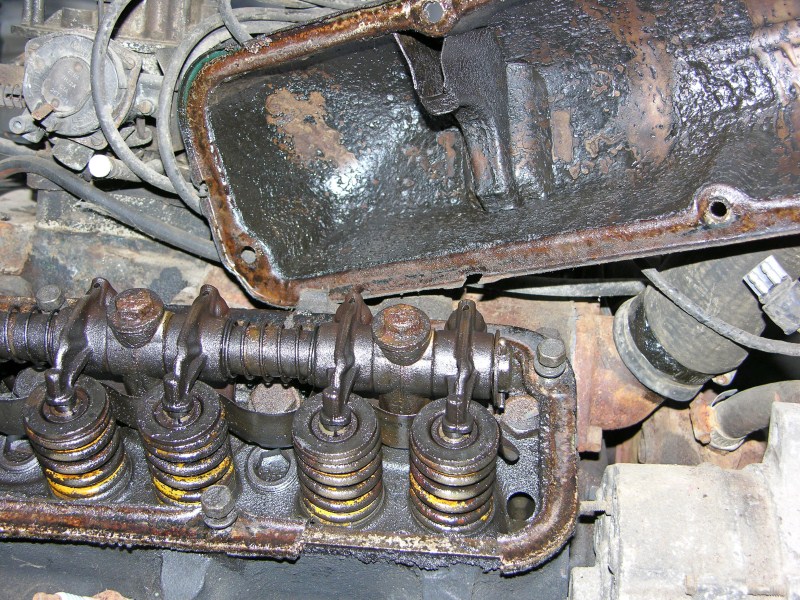
#1
The Ford FE is
unique in its engine engineering. 1/3 of the intake manifold
enters into the heads.
To remove the intake manifold, first the Valve
Covers and
Pushrods must be removed because Pushrods pass through intake
manifold holes.
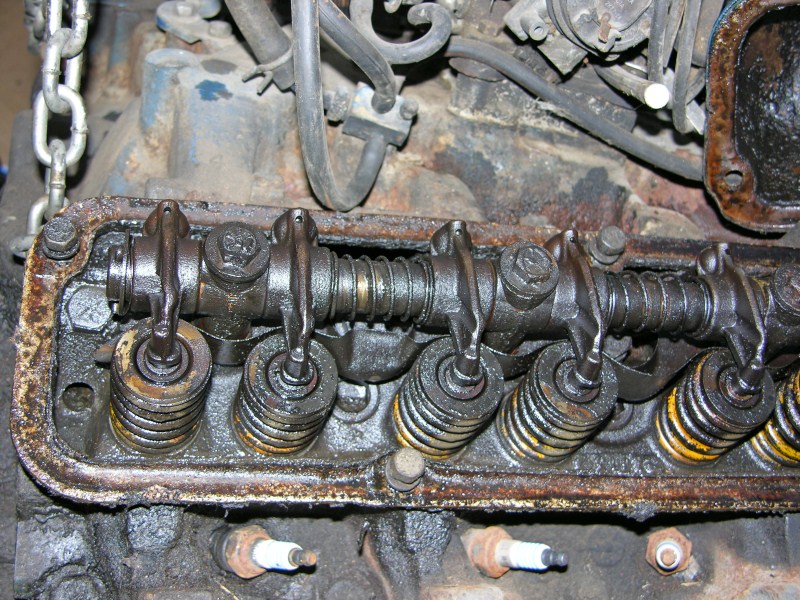 #2
#2
This engine shows signs that detergent oil was used. Some
crust appears on the underside of the covers but that should be
expected from an engine this old. I am amazed to see yellow
paint on the valve springs.
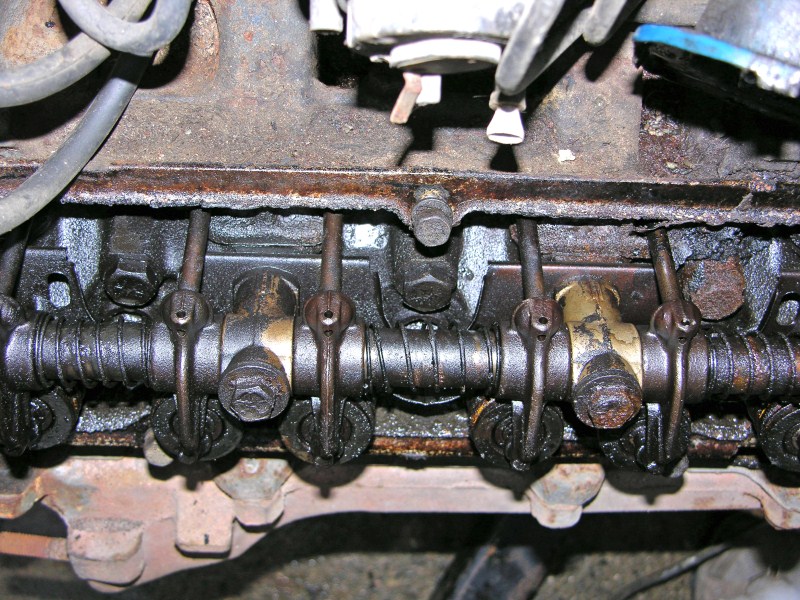 #3
#3
I will disassemble the Rocker
Shafts later, but they must be removed first, to access the Head
bolts.
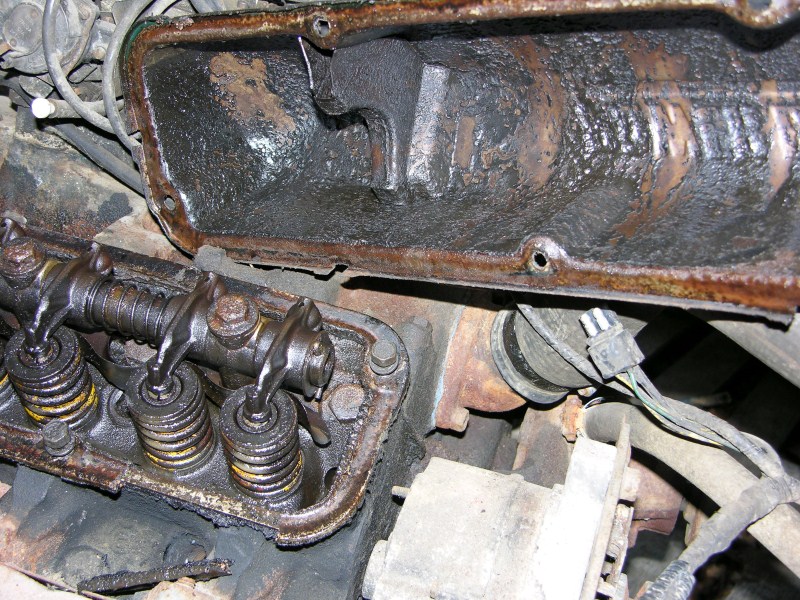 #4
#4
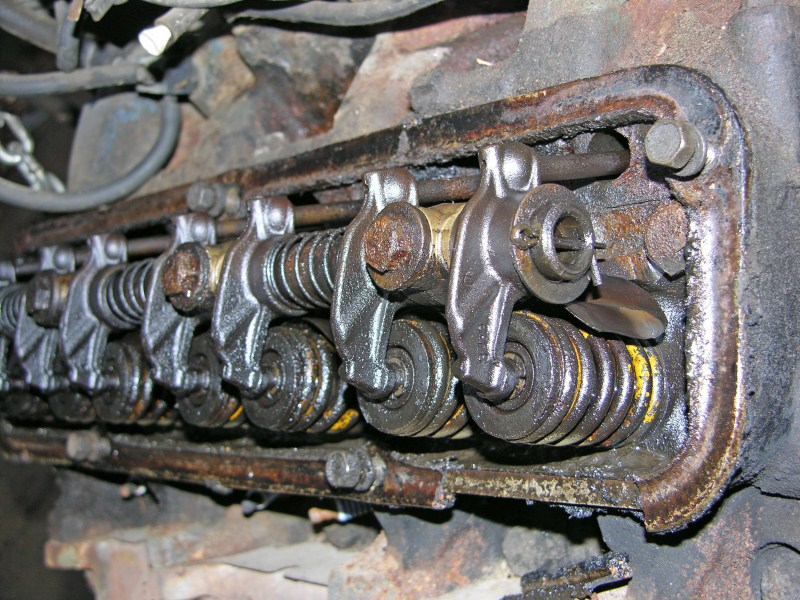 #5
#5
A 9/16" wrench removes these rocker shaft stands.
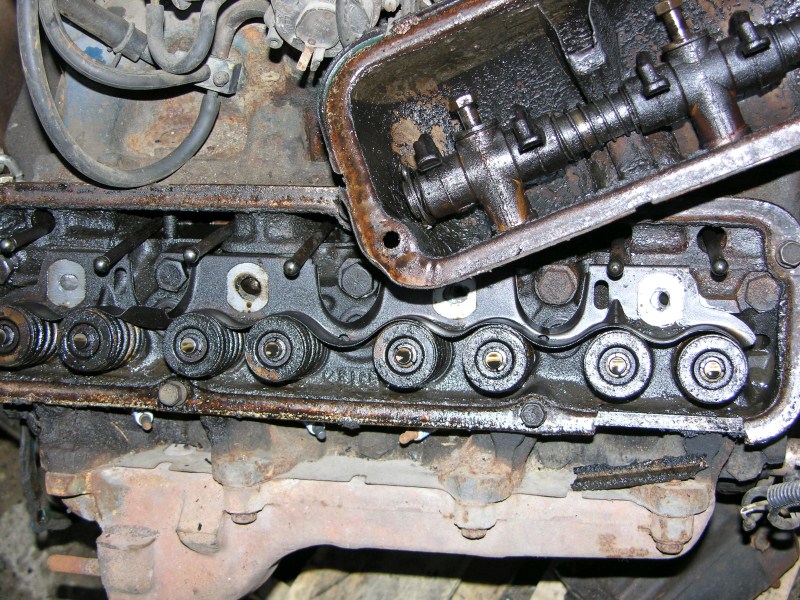
#6
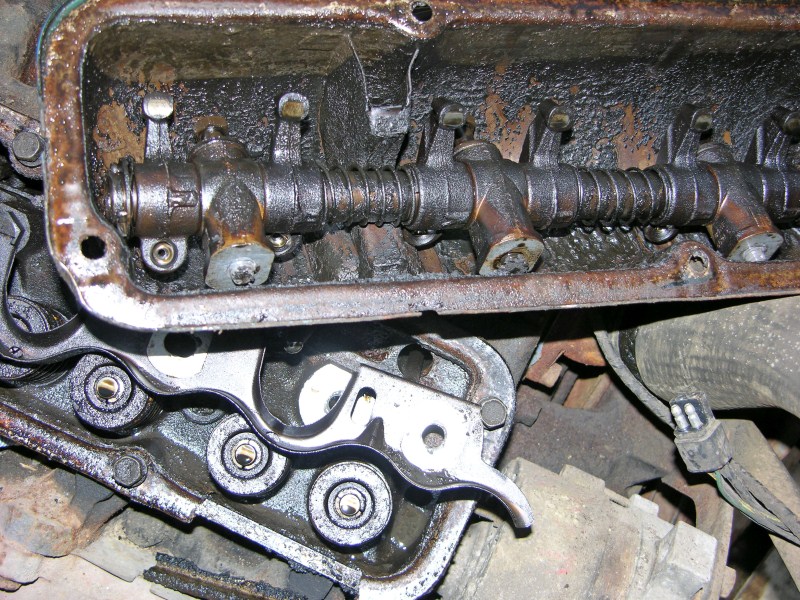 #7
#7
These Rocker Arms look like they were well oiled and the tips aren't dimpled
from the valve stems.
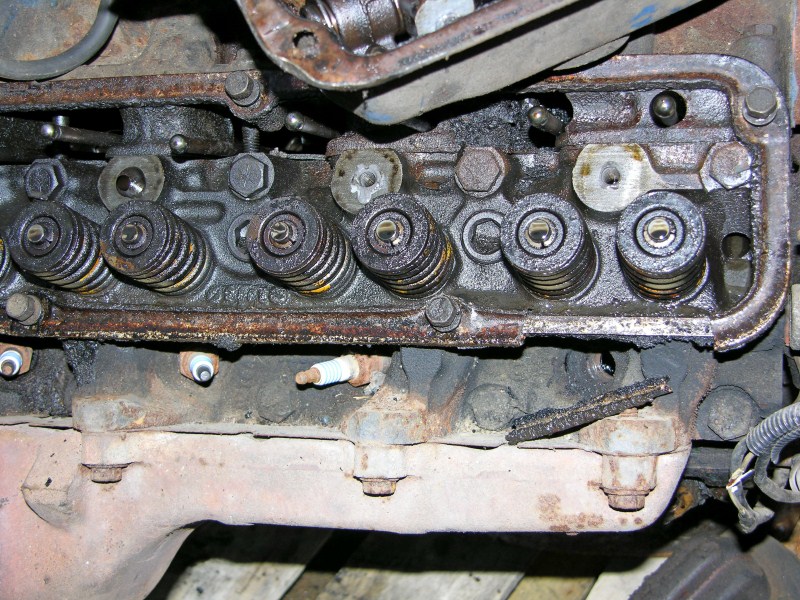
#8
Rocker Arm Shafts and Oil Baffles are removed to access Head Bolts.
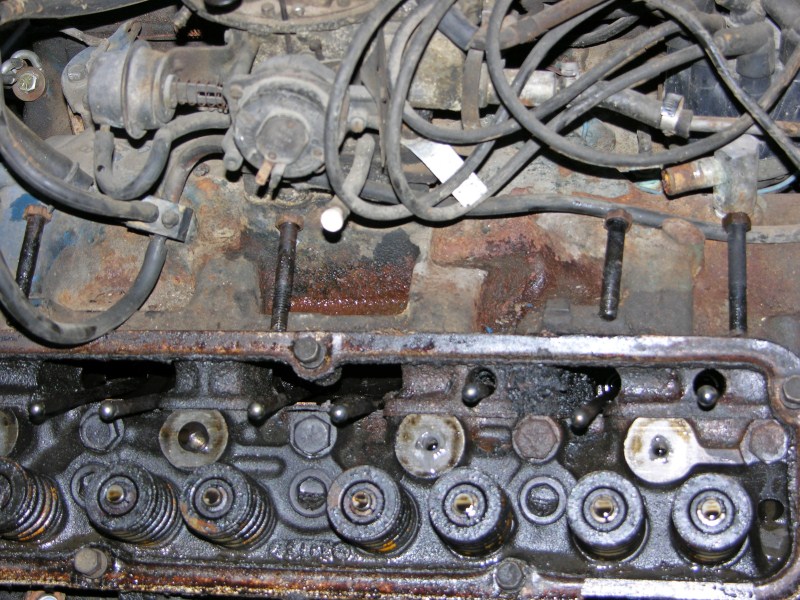
#9
Remove Intake Manifold bolts with 9/16" wrench.
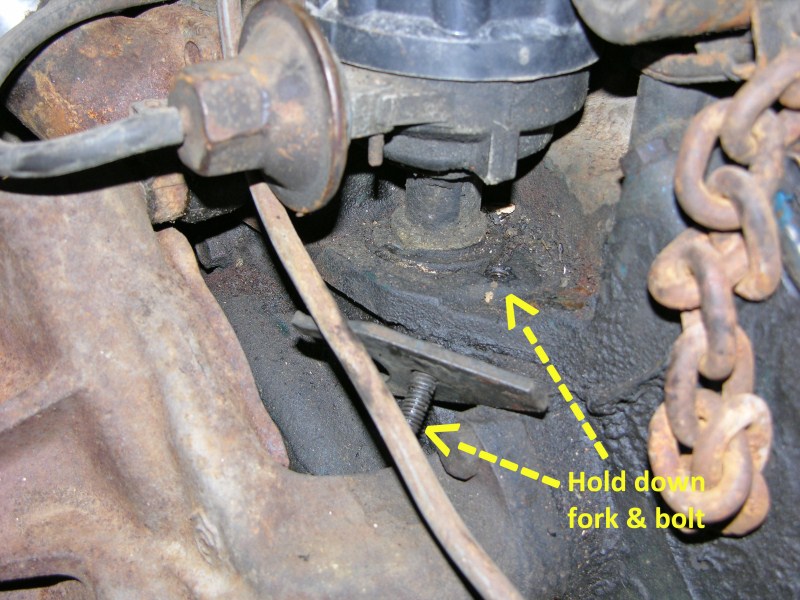 #10
#10
Remove the Distributor Fork bolt, and with a twisting motion, pull the whole Distributor out.
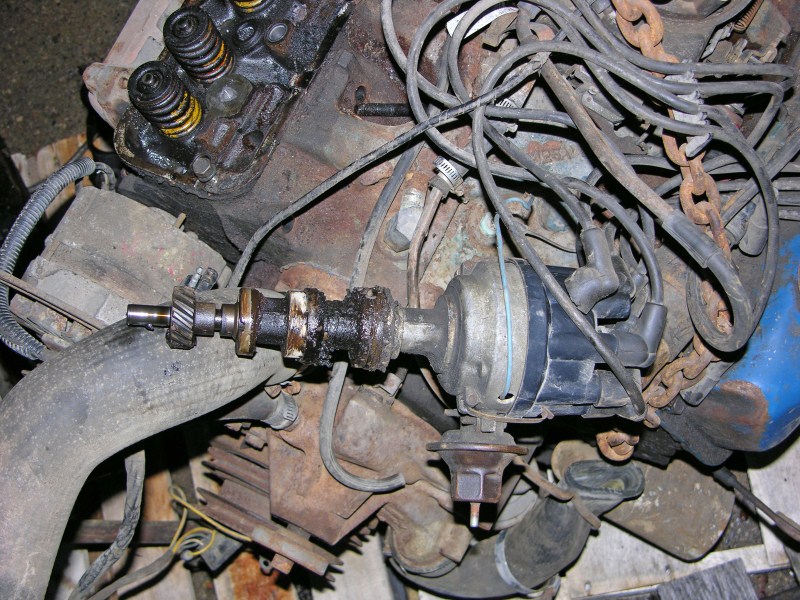 #11
#11
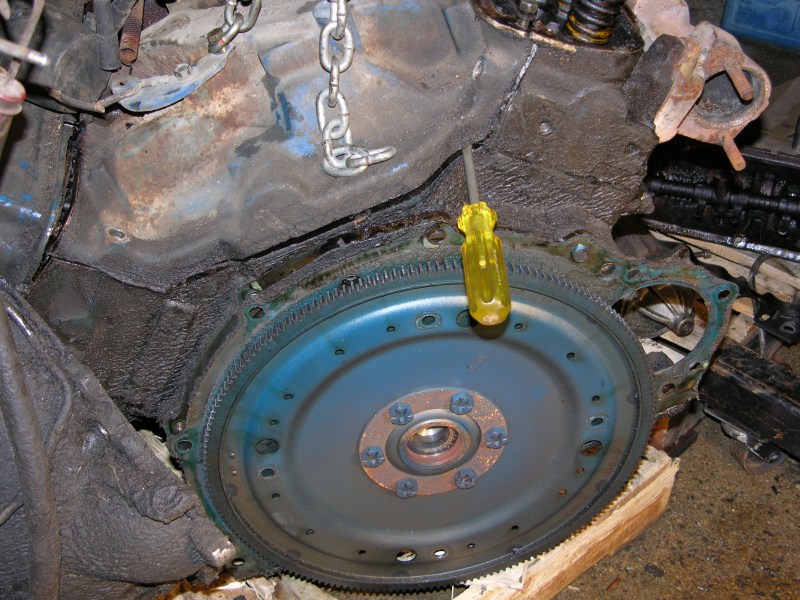 #12
#12
The Intake Manifold is extremely heavy. I use my
cherry picker to stabilize it while I crack it open.
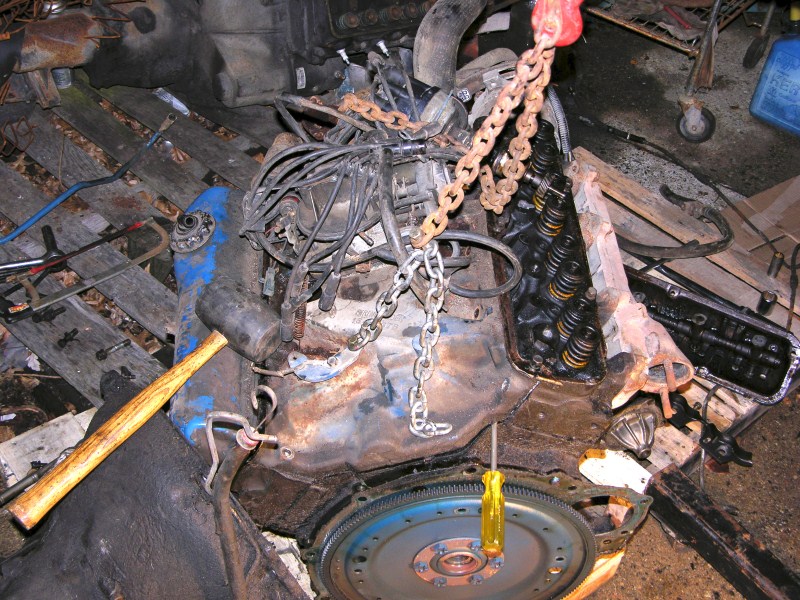 #13
#13
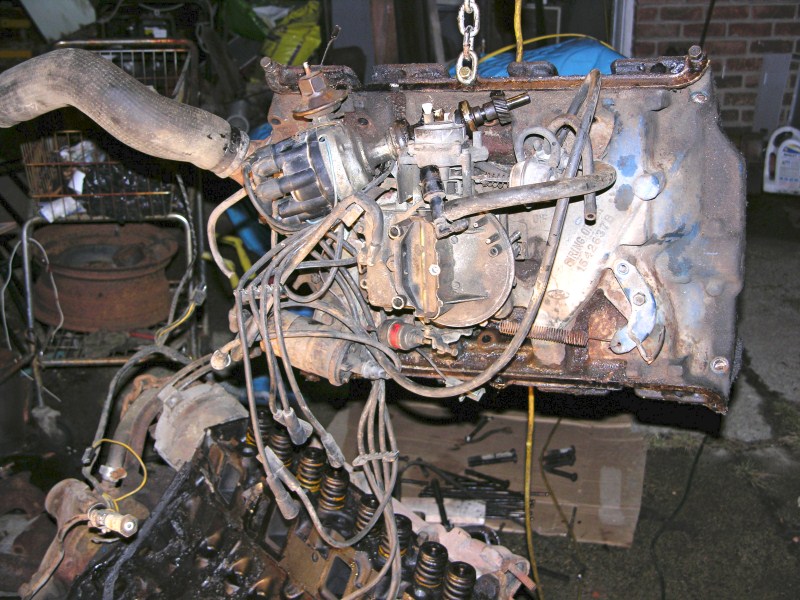 #14
#14
Amazing how heavy this piece is.
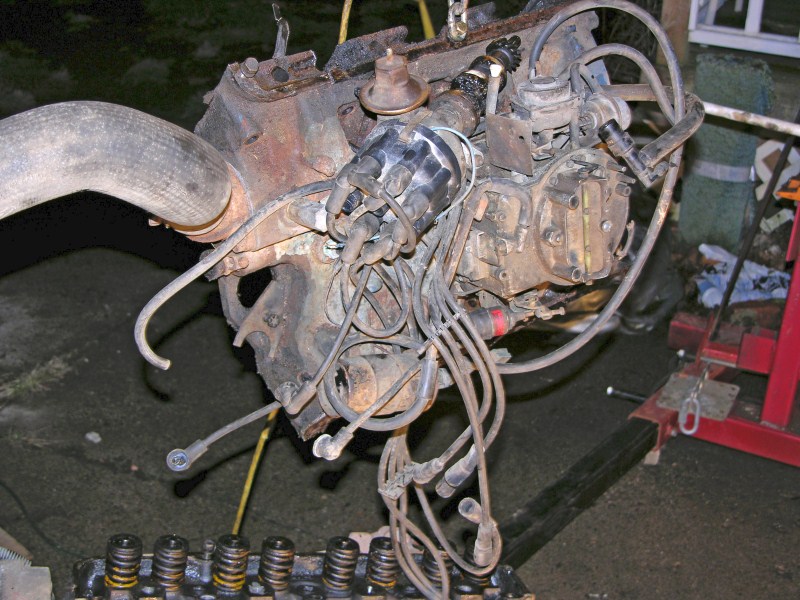 #15
#15
Good riddance, to this monstrosity. My eyes get a
hernia just looking at all that iron.
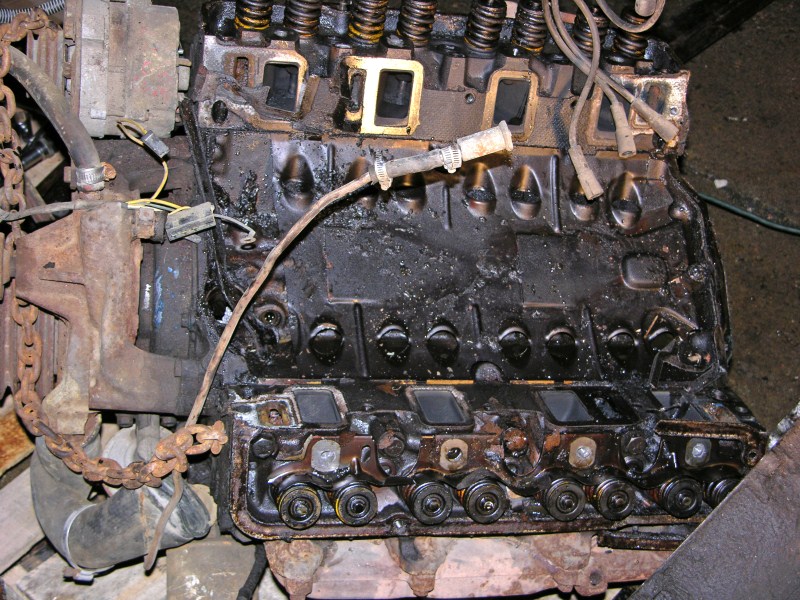 #16
#16
This baffle plate just lays there, unbolted. Set it
aside and let's pull heads.
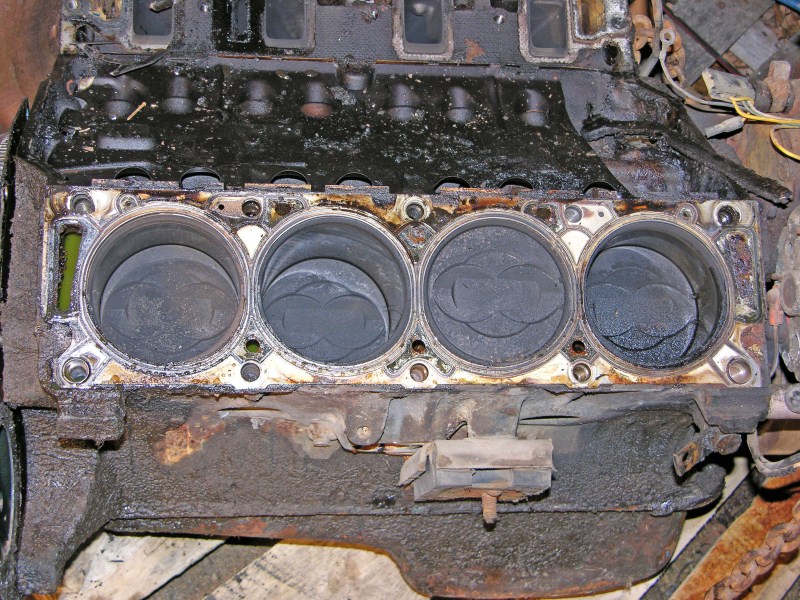 #17
#17
The moment of truth. See how shiny the cylinder walls
are? That's a telltale sign of an
oil burner. Just like driving with
slicks on wet road, if oil has nowhere to go, rings will hydroplane over
it. If the rings are old, two things happen; the end gaps are wide
and the 'spring' in the ring goes away because the diameters are eroded
away. The rings become 'tired', they hydroplane, and they no
longer have the ability to seal high compression. 45° hone crosshatch
relieves your rings from hydroplaning because the crosshatch gives the
oil somewhere to go (like grooves in the road).
Top of
Page
CLICK HERE
to return to Home Page


 #2
#2 #3
#3
 #4
#4 #5
#5
 #7
#7

 #10
#10 #11
#11 #12
#12 #13
#13 #14
#14 #15
#15 #16
#16 #17
#17